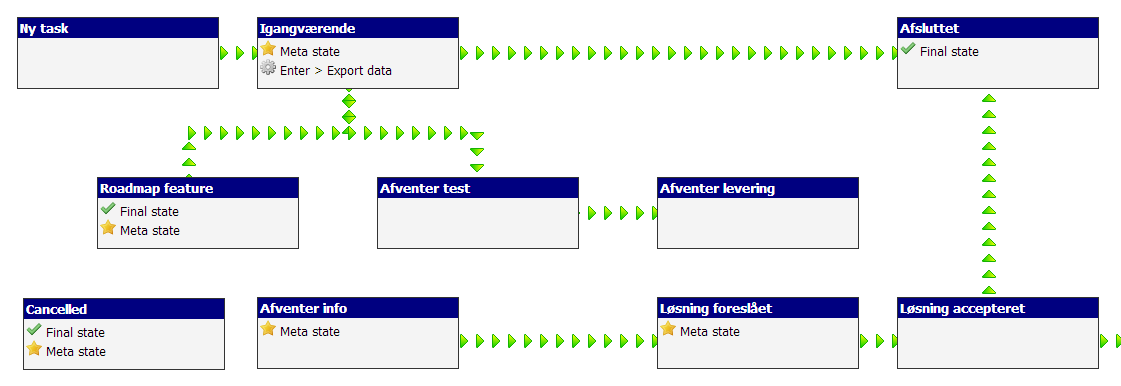Difference between revisions of "Structure/Status"
Jump to navigation
Jump to search
old>Admin (Created page with ' Related ressources include * Status flow * Status actions * Status dependencies * [[Str…') |
m (2 revisions imported) |
||
| (One intermediate revision by one other user not shown) | |||
| Line 1: | Line 1: | ||
Each record in Tempus Serva has a status assigned. | |||
A status signifies the state of the record, in regard to maturity, responsibility and degree of completion etc., but also serves as an anchor for automated actions and permission for users. | |||
A default status is allways assigned. After that the status can change either manually, or as a result of automated action. | |||
Sources for automated changes include | |||
* External users via questionaire interaction | |||
* Timed '''status actions''': Ex. Escalation | |||
* Automated routing based on reord values | |||
The states available for a record are defined by which states are connected to the current state, either by status connectors or special properties ("meta state"). | |||
[[File:Feature_statusworkflow.PNG]] | |||
Latest revision as of 11:55, 10 December 2021
Each record in Tempus Serva has a status assigned.
A status signifies the state of the record, in regard to maturity, responsibility and degree of completion etc., but also serves as an anchor for automated actions and permission for users.
A default status is allways assigned. After that the status can change either manually, or as a result of automated action.
Sources for automated changes include
- External users via questionaire interaction
- Timed status actions: Ex. Escalation
- Automated routing based on reord values
The states available for a record are defined by which states are connected to the current state, either by status connectors or special properties ("meta state").
Related ressources include
